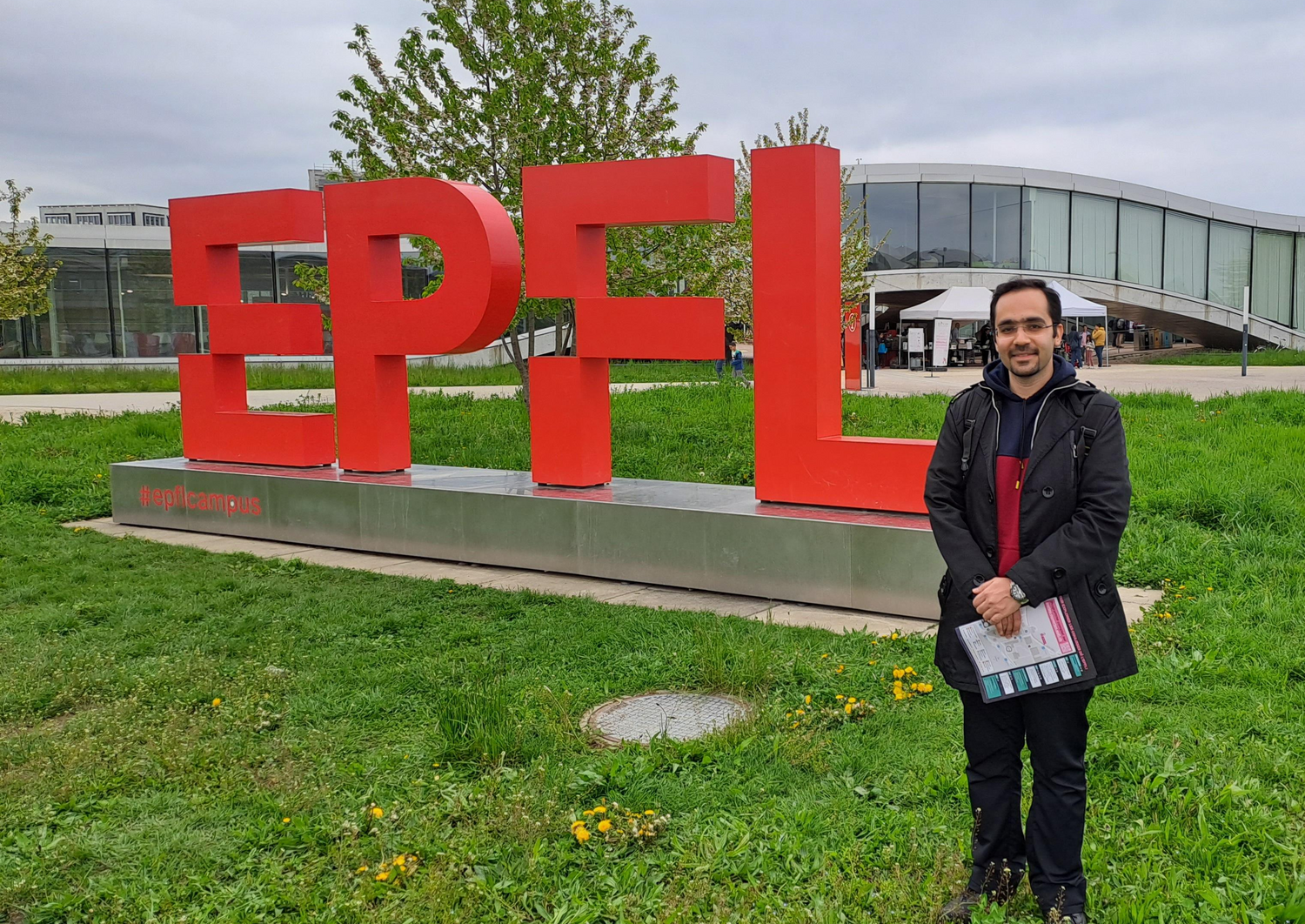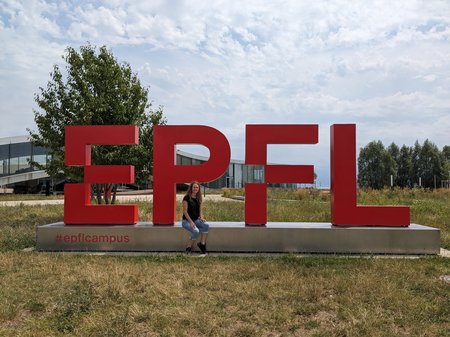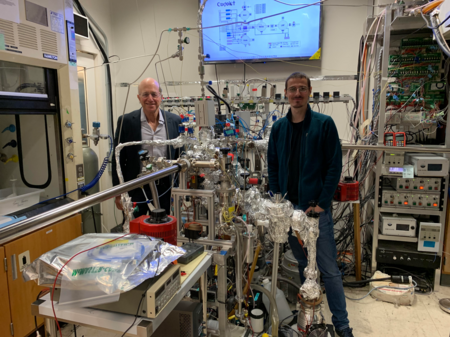In the realm of Intelligent Industry, Internet of Things (IoT), and Internet of Vehicles, where our interactions with the world are shaped, the need for seamless real-time engagement with surroundings and individuals has become paramount. Augmented reality (AR), navigation, garage parking, haptic sensing, and other applications have put forward new requirements for consumer electronics in localization technology, such as lower power consumption, higher accuracy, smaller size, wider coverage, and cost-effective batch manufacturing. To address these challenges, the technology of Piezoelectric Micromachined Ultrasonic Transducers (PMUTs) has been continuously evolving to replace their predecessors, Bulk Ultrasonic Transducers.
Learning from both sides
Mohammadsadegh’s PhD journey is defined as a collaboration between EPFL Microsystems and Microelectronics Doctoral Program (EDMI) and the SAL Microsystems Research Division with the goal of improving the performance of air-coupled PMUTs. This mission is pursued by implementing thin film piezoelectric actuator on different slotted rigid-flexible membrane configurations.
His primary research activities are centered within the facilities of SAL. However, when the need arises for specific equipment or processes related to SAL's ongoing research, Mohammadsadegh can take advantage of the infrastructure resources offered by EPFL University. For instance, the EPFL Center of Micro-/Nano-Technology (CMi) comprises state-of-the-art cleanrooms and an array of processing equipment designed to support both training and advanced scientific experimentation. This collaborative access to EPFL's resources allows the integration of EPFL facilities into the scope of SAL's research initiatives.
“Being situated within the EPFL campus offers me the benefit of direct access to top-notch course materials curated by field experts. Additionally, being near the scientific community provides me with valuable opportunities to engage in meaningful discussions and knowledge exchange, fostering a dynamic learning environment. Furthermore, being a part of the EPFL campus allows me to immerse myself in the vibrant and dynamic student lifestyle”, explains Namnabat.
Thoughts about the program
Prof. Luis Guillermo Villanueva about their work: “My group at EPFL focuses on expanding the state-of-the-art in NEMS and MEMS, particularly in the domain of sensing and communications. We follow a holistic approach, spanning design, simulation, fabrication, and characterization. I am excited about Mohammadsadegh's project and I am sure that together with Annalisa, he will be able to improve the performance of the available air-coupled PMUTs.”
Mohammadsadegh about this collaboration: “I highly appreciate to be working with EPFL University and the brilliant minds in Prof. Luis Guillermo Villanueva’s Advanced NEMS Group. Together, we're pushing the boundaries of what's possible in localization technology, and I'm thrilled to be a part of this journey.”
When asked what he expects for his professional future, Mohammadsadegh replies: “Looking ahead, I see myself as a university lecturer or a scientist in R&D in microsystem technology. Maybe I will also embrace the challenge of establishing a start-up that stems from my research output. Basically, what I want for my future is a mix of science, industry, and entrepreneurship."








